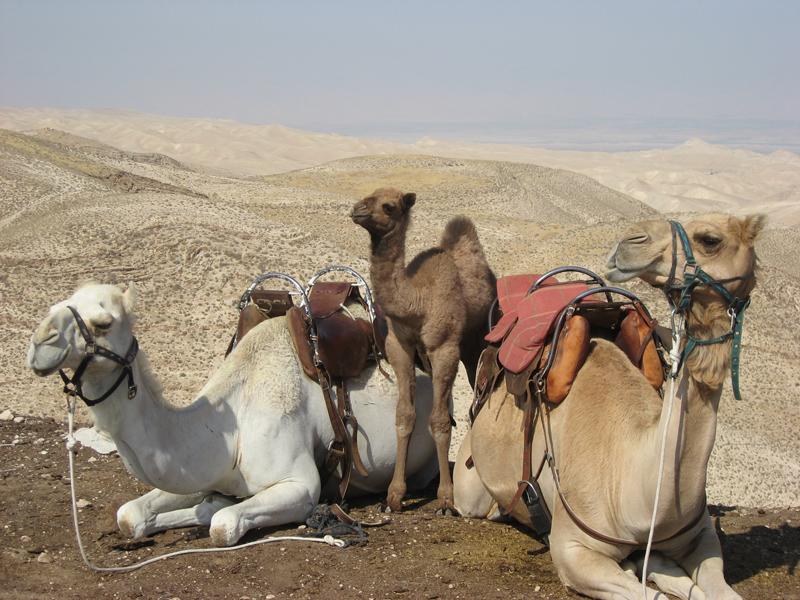
A Festival of . . . Camels?
Now that summer is approaching, festival season is upon us. Across the United States, you can find festivals celebrating nearly everything, from hot air balloons to sauerkraut, from corn to walleye. But here’s one festival you’ll need to travel a bit further for: the Thousand Camel Festival.
Held every year in a Mongolian town in the middle of the Gobi Desert, the festival features hundreds of two-humped Bactrian camels. A highlight of the event is the camel beauty pageant, in which participants wear traditional garb alongside their camels, brushed and adorned with gold fringe-covered humps. Festivalgoers can also watch camel races and camel polo, buy felt camel toys, and enjoy fermented camel milk.

But why camels? The festival began in 1997 courtesy of the Camel Protection Association, a then-new organization dedicated to the preservation of Bactrian camels. At that time, camel survival was threatened because Mongolia’s newly-established free market economy meant that herders could make more money from their camels’ meat, so they began to slaughter them. The goal of the festival was to create a market for camel products–such as milk and wool–and also to advocate for the animals’ protection.
While most of us just think of camels as shaggy desert animals, they are truly remarkable creatures. They can carry hundreds of pounds for long distances, withstand extreme temperatures, and go for weeks without food or water. They have two sets of eyelashes and sealable nostrils to keep out sand. They are also kind and gentle animals. But today, as more people move to urban centers and motorcycles, have become the preferred method of transportation, the practice of camel herding is dying out.
Dig Deeper What is the purpose of the camel’s hump? How is this another example of an adaptation that makes the animal well-suited to its environment?
Arizona Nunchuck Ban Lifted
Have you ever wanted to own your own pair of nunchucks? In Arizona, now you can–thanks to a new law that removes nunchucks from a list of banned weapons, including bombs, automatic firearms, and gun silencers. Nunchucks–a traditional martial arts item from Okinawa, Japan, which consists of two short sticks connected by a rope, chain, or leather strap–were first banned in the 1970s when martial arts movies started gaining popularity. But people who are against banning them argue that the ban is for weapons designed specifically for lethal use, while nunchucks are an important part of martial arts training today and aren’t merely used as weapons. They also say that it’s silly to ban them in a state like Arizona, where residents are allowed to conceal carry a gun. Furthermore, last year in New York, a federal judge declared that banning nunchucks was a violation of the Second Amendment to the Constitution.
But those who want to keep the ban in place argue that people can cause a lot of harm (or even death) to each other with nunchucks. They also point out that the amount of time and money that state government representatives have spent removing the ban is a waste of resources.
Now that the bans on nunchucks (also known as nunchaku and chuka sticks) have been lifted in New York and Arizona, only California and Massachusetts have laws preventing their personal use. Some other states allow them, but only for use in martial arts classes. Outside of the U.S., nunchucks are banned in Canada, Germany, Norway, and Spain. They are allowed in Hong Kong, but only by certified martial arts instructors who have obtained a special license from the police.
What Do You Think? People in favor of banning nunchucks say they are a lethal weapon whose only purpose is to injure others. Those against the ban say that their right to own them is protected by the Second Amendment. What do you think? Explain.
FIghting Facial Recognition
Did you know that if you’re an American adult, the chances that your face is in a law enforcement facial recognition database right now is more than 50 percent–whether or not you’ve ever been convicted of any crime? Why is that? Because facial recognition technology is everywhere. But the city of San Francisco has now said that enough is enough, and has become the first city to ban the use of the technology by law enforcement within its city limits.
Those who are in favor of the ban see the technology as a serious violation of privacy. There is also the fact that facial recognition software often makes mistakes, especially with misidentifying women of color. Why is this a big deal? Imagine that someone else commits a crime, and a flawed facial recognition system mistakenly identifies you as the culprit.
But others argue that the technology, while flawed, is also very useful. For example, it can be used to find missing persons or identify human traffickers or terrorists. People against the ban, such as many law enforcement officers, argue that instead of banning the technology outright, the city should just put a temporary moratorium on it instead, while these problems are ironed out.
Similar legislation has been introduced in Oakland, California, and in the state of Massachusetts. Even so, most Americans still seem to be fine with the technology, as the number of subscribers to biometric security companies continues to skyrocket.
